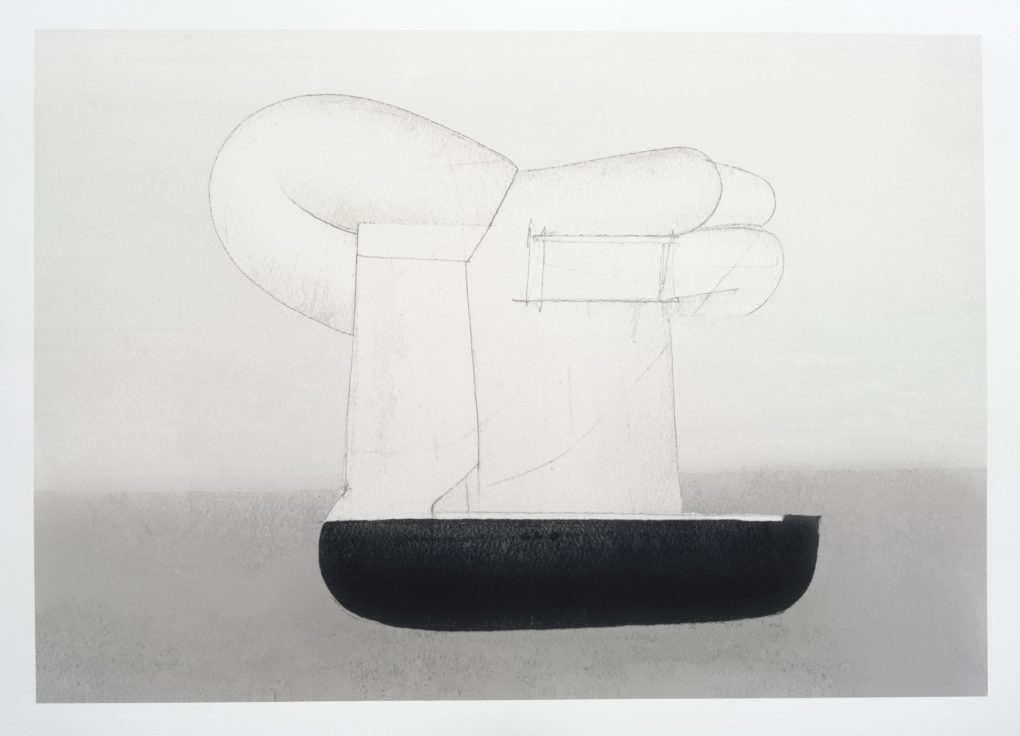-
New Addition to the Site, February 14, 2023
Three pieces have been added to the sculpture section of my site under 1995-2006.
I’ve worked with roofing tar quite a bit. It is cheap and readily available at hardware stores. It comes in two versions, shiny one that runs smooth and one with fibers in it which is more malleable and less shiny. Both can be diluted in solvents. They react in interesting ways with oil paint. It cracks paint when you apply on top of it, making cracking patterns on the surface. It can be thinned to be used to stain porous surfaces. The rich warm black is nice when it’s used as it is. When it’s thinned it makes beautiful brown. I’ve made various homemade paints using this interesting material. These three pieces use the home made paint in various ways. On #46 is applied many layers of the diluted paint, with a polishing process in between. The plaster surface sucks up the paint well, forming a shinny layer at the end. I like how the paint reveals the density variations as marblized patterns. #45 has the same process, but with a surface patterned with various size small holes. The white part is painted with enamel. The surface has my tar encaustic paint as well as black paint. #47 is stained with thinner paint, again circular patterns reveal the density variations in interesting ways. I was a little concerned with the longevity of the paint but they all seem to be very stable.
-
New Additions to the Site, January 16, 2023
Here are three pieces recently added to my site in sculpture section under 1995-2005.
I wonder if I will ever see these pieces in person again. Seeing older pieces can be an odd experience. It’s like meeting an old friend but the friend hasn’t aged at all; I meet the presence just as I remember. It’s as if time and space don’t exist where they live.
-
New additions to the site, January 8, 2023
I didn’t grow up surrounded by art. I was really into making plastic model kits, drawing comic book characters or just making things in general as a kid. But I didn’t really know visual art as a potent social institution. I had to be exposed to art in front of my eyes. I took an art class when I was attending community college. The teacher showed me his paintings and drawings, demonstrating that marks on paper can do what sounds can do with music. This was eyeopening for me. I was captivated by this phenomenon. So from the very beginning, my interest centered around capturing this mysterious quality that somehow moves me.
So it’s probably not a coincidence that I stuck with simpler forms without recognizable representations. I wanted to capture this mysterious thing, not to represent a concrete idea with symbols or narratives. I wanted to be struck directly with this something. The works I did around that time are heavily guided by this idea.
These two pieces show my typical ways of mark making at the time and later time as well. One is circular forms made by electric drills with spade bits. I like the contrast of precise circles and how they meet with the materials to express the physicality. Second is the use of homemade encaustic paint applied to express textures and tones of the surface. The paint is also used to express structural dynamics with lines, shapes, contrasts and so on.
-
New additions to the site, December 14, 2022
I asked my wife what I should write to go with this post. She jokingly said that I should write about why I make such weird images. I don’t know the answer to be honest. But I think things are weird. We stay in our routines, we observe rules, ideas, myths and beliefs flooding out of big corporate entities to remain “good citizens” of “democratic countries”. But when we take one step outside and look in, we see people hurting each other for nothing, people following ridiculous rules and people being forced to play clowns in a circus only to keep up with the status quo. People pay prices to stay in these invisible cages. The cages distort the bodies, the faces, the minds and the souls. The rosy promises and slogans are conditional, propping up the hierarchy governed by money and violence. Weird to see things upside down. Weird to see people sleeping on streets when rich people have many houses. Weird to see more money spent on bombs than healthcare, housing, and food for the people. Needless to say these things aren’t just weird, they are brutal and upsetting. So there is that. But when I work, I try to empty my head to feel visual elements for what they are, and let them speak; surely weird things come out, but profoundly fascinating things happen among them too, just as in real life. Perhaps it is a practice to find potentials among elements when they can interact on their own accord. Maybe they are like how life can be. Anyway, I’m posting because I just added 6 recent paintings of mine to my site. They are under Painting. You can see multiple views and details for each piece.
Studio update:
I’ve been working on new sculptures. The next set of pieces will be sculptures. -
New addition to the site, Nov 22, 2022
6 of my recent sculptures have been added to my site. They are in the Sculpture section under 2020-current. You can see alternate views and details for each piece.
Despite the grim nature of the ongoing social restructuring for more disparity, more authoritarianism, more commodification, more financializing, and more propagandizing, I must say I was relatively prolific for the past two years. Perhaps I was forced to face my source of creativity and imagination more as the predicaments increased a sense alienation. I was perhaps yearning for a solid ground to stand on; to me, this is often my studio and my work. On the other hand, I have also met new friends as my social network shifted, and I also renewed my appreciation for people who have been helping me all these years. I am looking forward to facing what life brings to me.
-
New Print, B18-01
Here is my tenth Piezography print. For those who are not familiar with Piezography, it is a black and white photography printing method. It utilizes color inkjet printers, but the method uses black inks in the color heads, expressing varying degrees of grays instead of grays expressed with black dots. You load a special software to your computer which controls appropriate actions of the heads to produce black and white prints. It sounds complicated, but once your equipment is set up, it continues to work reliably. In fact, to me, one of the best things about it is its solidness in producing consistent results. It allows me to concentrate on the making part instead of getting bogged down with the technical part. A photographer friend of mine, Brian Miller, told me about it years ago, praising its exceptional print quality.
I start from a scanned drawing. Then I work on the image on the screen. After a meticulous and long editing process, back and forth from screen to paper, and vice verse, I arrive at a finished print. So the prints are not reproductions; there are multiples but each of them is an original.
For those interested in the prints, please take a look at the print section of the site. The new one will be added shortly.
B18-01, Piezography on archival cotton paper, variable sizes, 2019-22
-
New additions to the site, Nov 3, 2022
6 pieces have been added to the site in the sculpture section under 1995-2005.
I moved to eastern Long Island in 1999 to be with my future wife. Those pieces were finished either in 2001 or 2002. Some were brought over not yet finished from a sweatshop building in Union City, NJ, where I lived and worked. I lived in my art studio where a tiny area for my bed was symbolically separated from the studio fumes and dusts with a plastic sheet. I was young and all I thought about was working in my studio.
Then I loaded my 1995 Toyota T100 pickup with all I had and moved to where I am now.
I was always in search of a studio space when I arrived in Long Island. I tried working in a small shed at the house where we lived and still live. I purchased a horse trailer with a for sale sign to be converted into a studio. I rented a friend’s basement as a studio. Nothing really worked too well, but the works somehow found their way out. One of the reasons why I worked primarily on wall pieces at the time was the space constraint, although I had my beginning as a painter and I do have affinity toward wall pieces.
-
everything is free now
In Art, Artist, Capitalism, colonialism, Culture, digitalization, empire, Exhibition, financialization, imperialism, News, outdoor art, Painting, public art, street art onI had a great time strolling around Brooklyn with Josh and David from everythingisfreenow.org a few days ago. It’s been awhile since everythingisfreenow.org left social media platforms. But of course that doesn’t mean they don’t exist. They’ve quietly placed hundreds of paintings on the streets of Brooklyn so far. If you know where to look, you see that their work has become a part of the cityscape. Their work has turned the public space into a place to appreciate and discuss art and life.
The language of art manifests as the language of life. No matter how hard the ruling class tries to digitize everything, financialize everything, commodify everything, colonize everything to mold everything into the imperial framework, life finds ways to build its social fabric on its own terms.
New York has gone through so much: Wave after wave of neoliberal restructuring have been inflicted in the name of fighting crimes, terrorisms, and the virus. The same people who define “crises” have been the ones who benefit from “the solutions”. The social hierarchy is maintained and continues to function as a machine of structural extortion. But life still persists as art on streets, community gardens, cooperative housing projects and etc. Seeing them up close and hearing about them from Josh and David warmed my heart.
Here are some photos from their website:
-
Gana Art Bogwang Show 2022
I am not religious at all in a traditional sense. But being in my studio struggling to make work has taught me that there are incomprehensible mechanisms operating beyond our perceptions. The glimpses of the vastness show up as “uncanny coincidences”, “unexplainable perceptions”, “overwhelming emotions of unknown origins” and so on.
So when I felt an unexplainable familiarity in being in Korea, an overwhelming sense of nostalgia and extreme sadness in leaving the country, I was not too puzzled, but still the sensation was new and palpable. All I can say is that things connect in some unknown ways and I humbly feel it as it is.
This is one of the bigger shows I have had, with 17 art works in a large venue with 2 floors.
The pieces were selected by Jung Lee the director of Gana Art and his curators. The set certainly has a cohesive theme of some sort, but I couldn’t pin point it initially. The director basically said that he thought about the taste of the Korean audience. The pieces filled up the venue like they were made for it. They certainly made selections which are cogent and very effective as a whole.
Having been in Korea looking at its art, new and old, working with people there and breathing the air in Seoul, I came to speculate on an intuitive level that the theme has something to do with some sort of faceless force of nature which grips hearts of the people in the region. And grips hearts of people in surrounding regions just as the Japanese centuries ago were so passionately fascinated by their ceramics in a narrowly defined context of “wabi sabi” sensibility. In reality, though, what I am trying to describe exists in more fundamental and ubiquitous ways, which can manifest in countless ways. It’s the resigned harmony with the unknown vastness, which I also feel as a basis of my studio practice. To me, being in studio is to be a listener, a keen observer, a channeler, who reflects dynamics surrounding us as patterns which resonate with us with visceral significance.
And this somehow relates back to my feeling about being in Seoul—my familiarity and affinity toward it. I am deeply drawn to the land, food and its people without knowing exactly how or why. My attempt in articulating it seems to remain circular as words go around the essence.
In any case, I thank the wonderful people I met there and I look forward to our future collaborations.
Here are some images from the show. Some detail images have been added, which were photographed previously in my studio.
-
Conversation with Sean Sullivan
Here is an interview I have done with artist Sean Sullivan. Sean is one of the artists in the show Three Painters at Duck Creek, which I curated for the Arts Center at Duck Creek. I enjoyed our conversation tremendously and I thank Sean for being a part of the fantastic show.

Sean Sullivan’s paintings from Three Painters at Duck Creek. Here is a list of works at the Arts Center at Duck Creek site.Hiroyuki: How did you come to pursue visual art? Do you remember a special moment or a series of events that convinced you that this is something you want to do with your life?
Sean: I really came to art – drawing, writing poetry as a teenager right around the time I discovered music. Music opened my world up – gave me an awareness beyond my own experience. It’s always been and still is a very important part of the process for me.
As a teenager I was too shy to get up and sing songs so I channeled my energy into drawing and writing poetry. It felt like I was sending signals to unseen allies from behind enemy lines (still does). Drawing and writing poetry in a notebook felt possible to me somehow – both so close to the ‘self’ – idiosyncratic like handwriting. In other words, no one could tell me I was doing it wrong. Intelligence didn’t matter, training didn’t matter. I could pursue these ‘secret’ activities in earnest, at all times – even while in the classroom listening to the teacher or later on the job or traveling on a train, etc.
Coincidentally as I write this on Father’s Day – it was my father who really pushed me to pursue art and the creative life. He really believed in me and told me every chance he got.Hiroyuki: I like how you as a child recognized the essential quality of art to be an expression of who you are for those who can accept you as who you are. Ultimately, I think this is one of the fundamental aspects of art that validates its meaning in our society today. In fact, your work does resonate in me at some deeper levels.
I’ve learned that you have a special process that’s in between painting and print making. Could you describe how it works and what it does? And how you came across it and why?
Sean: I began using the oil transfer process about ten years ago. I came to it by accident – out of frustration really. Basically I apply oil stick to a sheet of newsprint and thin it out with a silkscreen squeegee until it resembles something like carbon paper. I then place the found paper face down on top of the oil transfer paper and make a drawing on the reverse of the found paper with a Bic ballpoint pen. Each color in a finished piece is represented by a different sheet of oil transfer paper – a hybrid sort of drawing/printmaking process.
Over the years the process has refined some and evolved conceptually as I began to think of this process akin to plate photography and musical recordings.
I use ‘found paper’ not out of some nostalgic yearning but because I find new paper to be kind of cold and homogenized. The history embedded (the marks and color) in found paper give me a head start somehow – something to react to. I source the found paper mostly from books (used bookstores and antique stores) that I either buy or many times friends pass along.
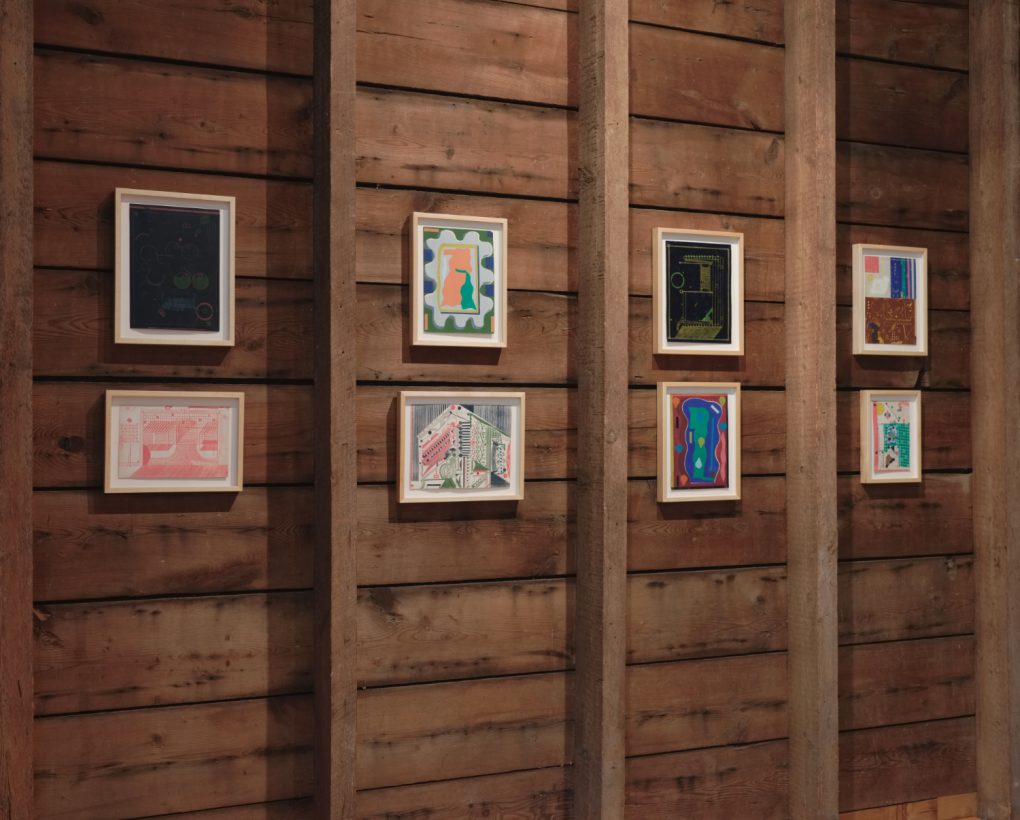
Sean Sullivan’s paintings from Three Painters at Duck Creek. Here is a list of works at the Arts Center at Duck Creek site.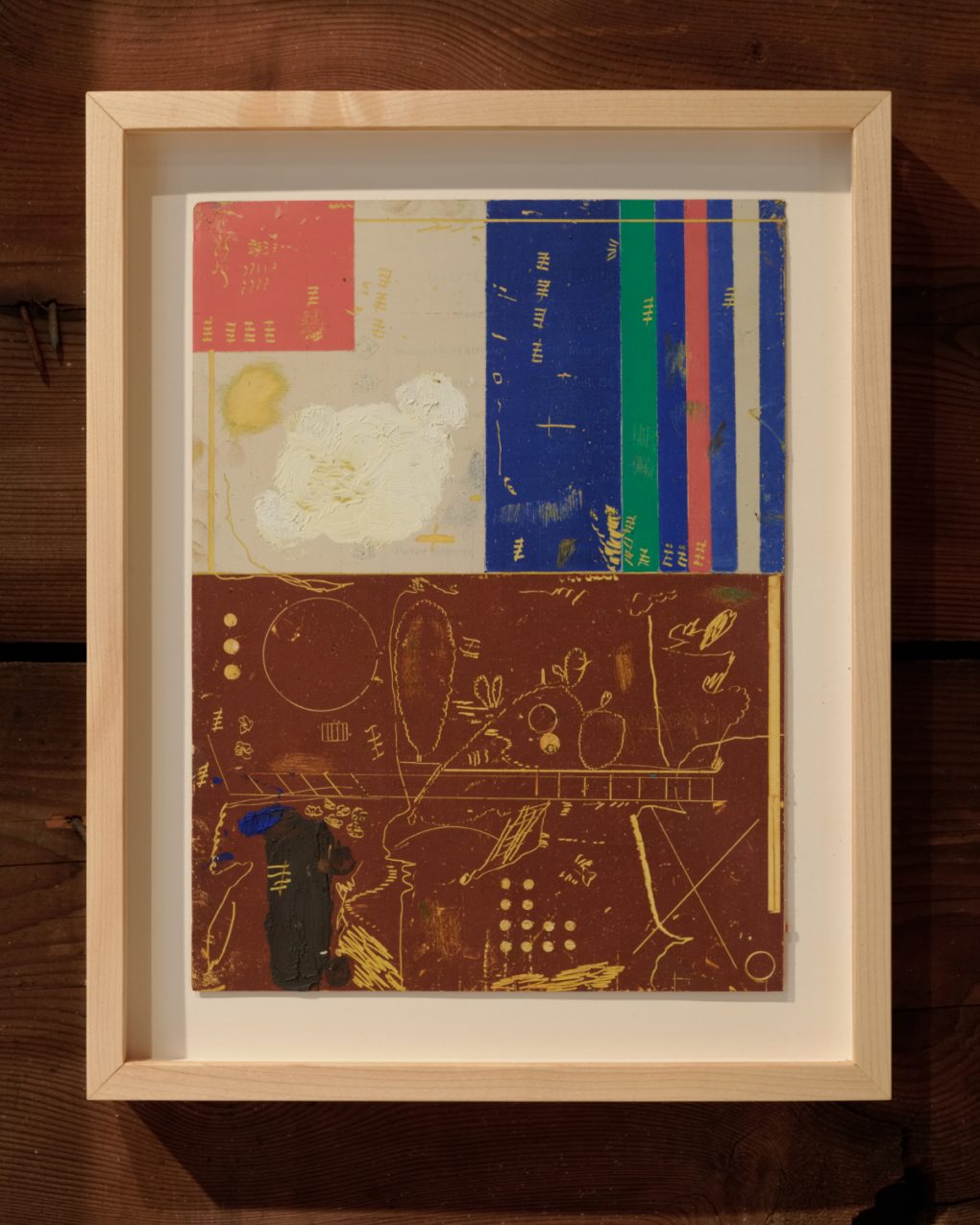 Carnival, 2020, Oil on found paper, Unframed: 7.75 x 10.5” / Framed: 10 x 14”
Carnival, 2020, Oil on found paper, Unframed: 7.75 x 10.5” / Framed: 10 x 14”Hiroyuki: So you have a real setting with its history and characters somehow when you start. And your action is an interaction with it as much as your own narrative coming out of your psyche. And perhaps the print aspect allows your process to manifest in unexpected, yet organic ways? And what about the imageries?
Sean: Yes exactly. The history embedded in the paper offers a starting point and the process allows for both predictability as well as improvisation. The imagery is improvisational – instinctual even if I try and start with a plan it always goes off track and I just go with it. A piece usually falls flat if I’m trying too hard to ‘do’ something – to control the outcome. Hope that makes sense.
Hiroyuki: It certainly does. How do you describe your improvisational process? Could you describe your work environment for the readers?
Sean: I think improvisation begins before you even sit down to work. It’s an exercise in faith or the practice of faith maybe? I don’t mean that in a religious sense per se, but faith in ability, in intention and in good outcomes. A trust that you can make something from nothing and even if there are ‘mistakes’ or setbacks, by adjusting expectations you can land in a more unexpected, inspired place. There is no right, there is no perfect and starting from that point – everything, every mark makes sense and has a place.
My studio is full of natural light and close to the family – a small sun porch attached to our living room. Marie and the kids are in and out all the time. It’s a perfect situation for me – I need them close by. The paint I use, R&F Pigment Sticks, I make for a living (for the past 13 years). It’s all close by I guess.
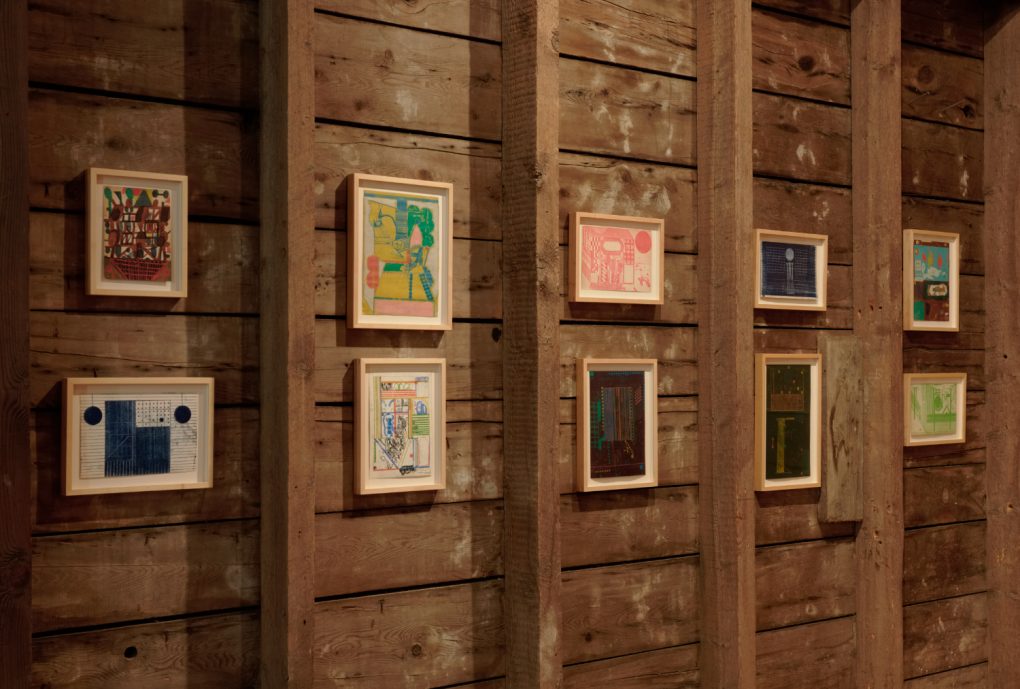
Sean Sullivan’s paintings from Three Painters at Duck Creek. Here is a list of works at the Arts Center at Duck Creek site.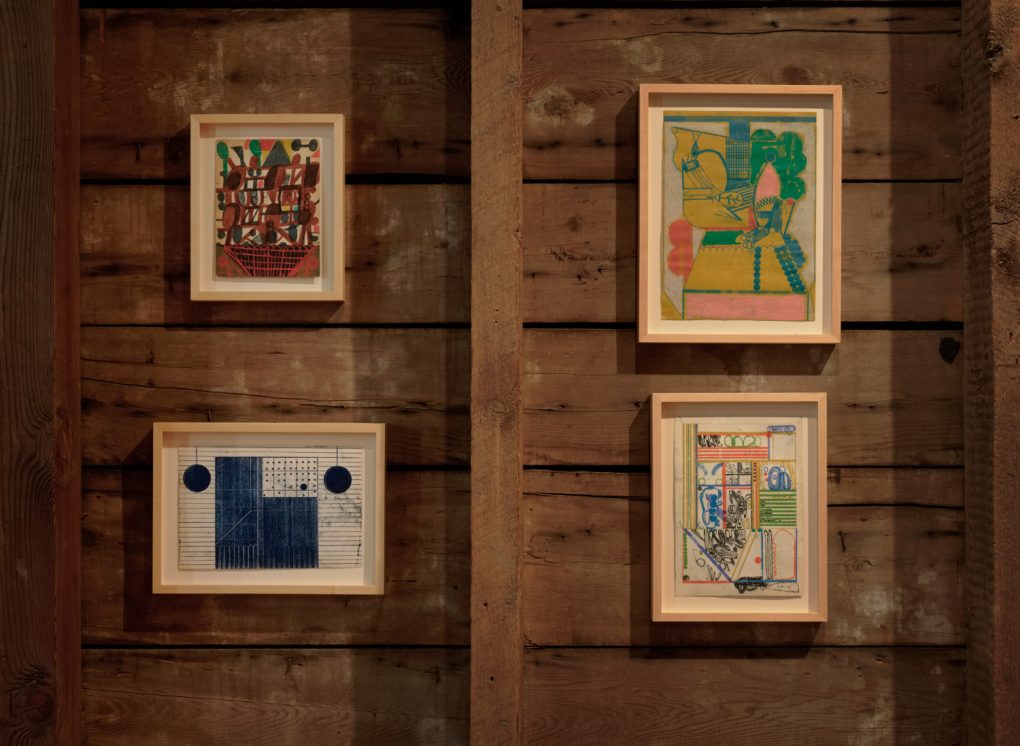
Sean Sullivan’s paintings from Three Painters at Duck Creek. Here is a list of works at the Arts Center at Duck Creek site.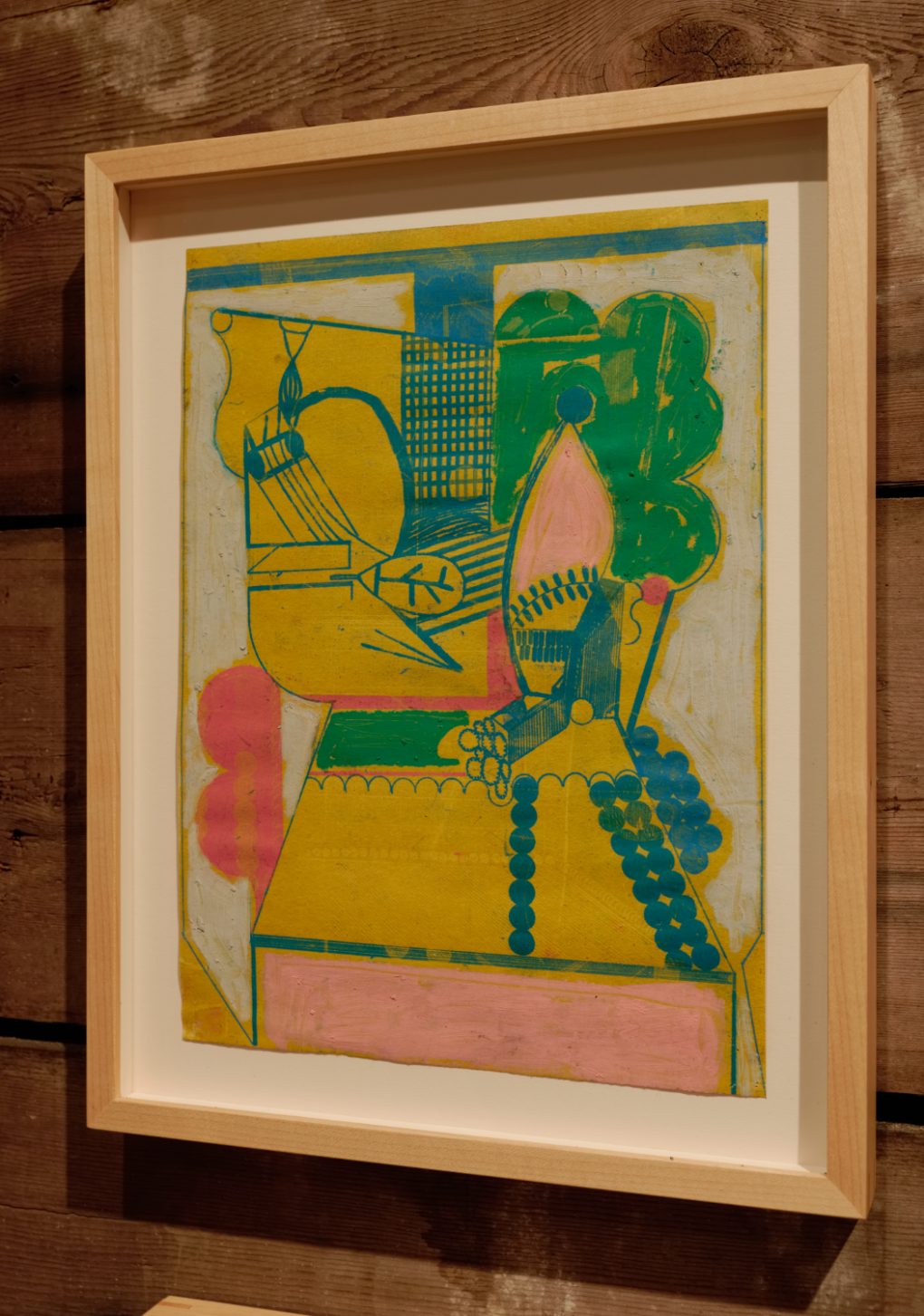 Rodriguez Solitaire, 2019, Oil on found paper, Unframed: 8.5 x 12” / Framed: 11.5 x 14.5”
Rodriguez Solitaire, 2019, Oil on found paper, Unframed: 8.5 x 12” / Framed: 11.5 x 14.5”Hiroyuki: I like that. There is an element of faith in facing the unknown as we make. When I visited you last time, it was eye-opening to see your work being so much a part of your family. This also extends to your position at R&F Pigment Sticks. Instead of seeing the creative process as an opposing element against your circumstance, you have put good efforts in creating an environment that enhances your work as much as your life and people you love. I think this is very significant in terms of making your “faith” grounded to your reality.
In your booklet “This Means I Always Have Something to Do. A Conversation Between Sean Sullivan & John Yau” you talked about differences between working within set conditions as opposed to being more flexible and organic. To me it seemed that you are good at putting your life in a cohesive framework so that you can be free within it.
Now, I assume that you must have challenges on your path. Could you describe some of the biggest obstacles and how you deal with them?
Sean: My apologies for taking so long to respond to this question – time is elusive! which brings me to a challenge I’ve always faced (I think many of us face) which is time – finding the time to make work. At this point I’ve come to terms with the limitations and to be honest if I had ‘all the time in the world’ I’m not so sure I’d be making better work or more work. Having said that I would like more time in the studio – even just for looking, moving things around – thinking. Another challenge I’d have to say is doubt – at times, extreme doubt – I think in some ways the other side of the coin so to speak. Normally I make work and don’t look back but every now and again I do turn and take stock and that can be sobering. I do have to say through all of these challenges I feel very, very lucky to make work and to share work and for all the talented, devoted individuals that I’ve had the opportunity to work with – galleries, artists, etc. and that I get to continue to make work and maintain balance in our family life is so important. I’m grateful.
 Fairgrounds, 2018, Oil on found paper, Unframed: 6 x 8” / Framed: 8.5 x 10.5”
Fairgrounds, 2018, Oil on found paper, Unframed: 6 x 8” / Framed: 8.5 x 10.5”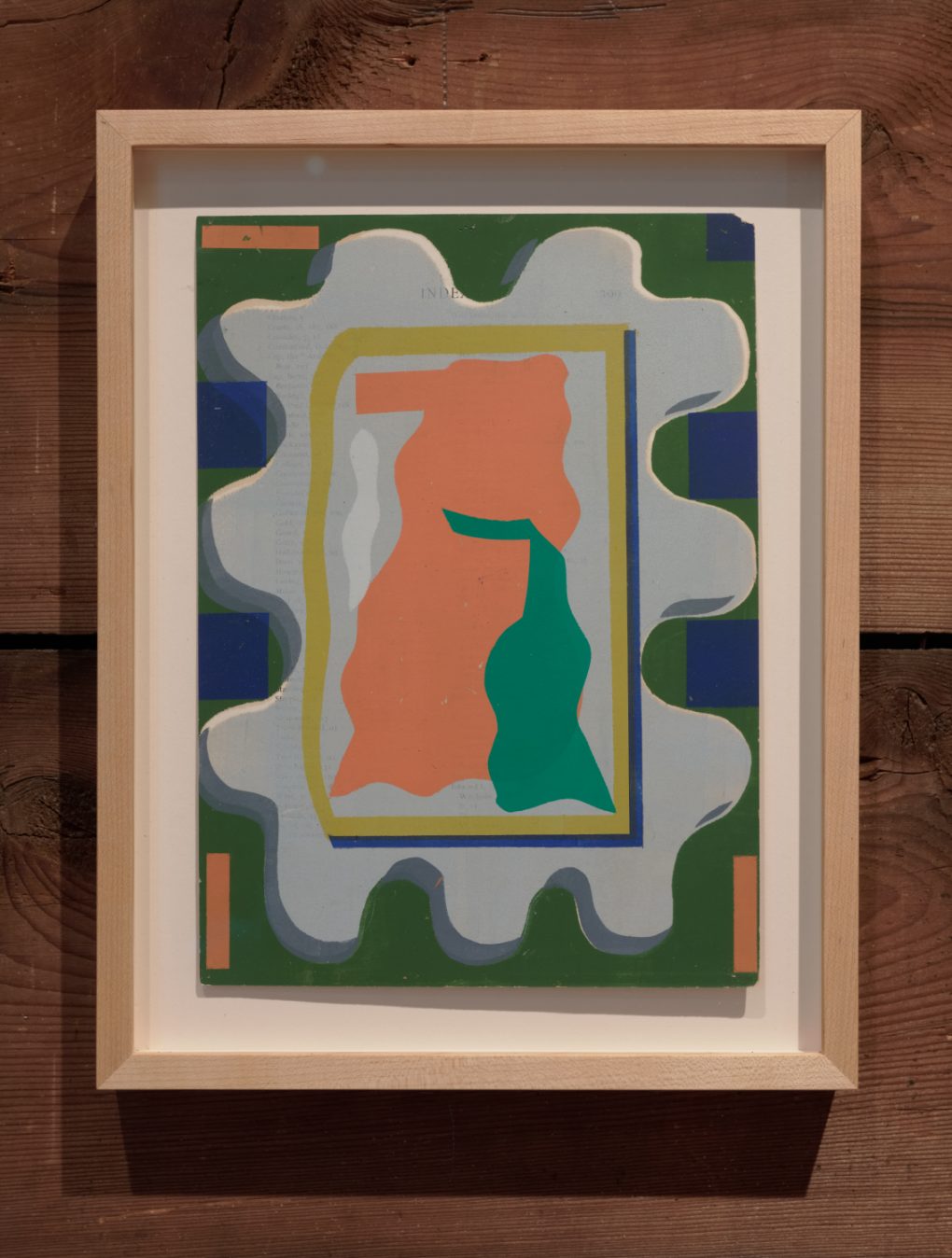 Things huddled together surrounded by uncertainty, 2019, Oil on found paper, Unframed: 7.5 x 11” / Framed: 10.5” x 13.75”
Things huddled together surrounded by uncertainty, 2019, Oil on found paper, Unframed: 7.5 x 11” / Framed: 10.5” x 13.75”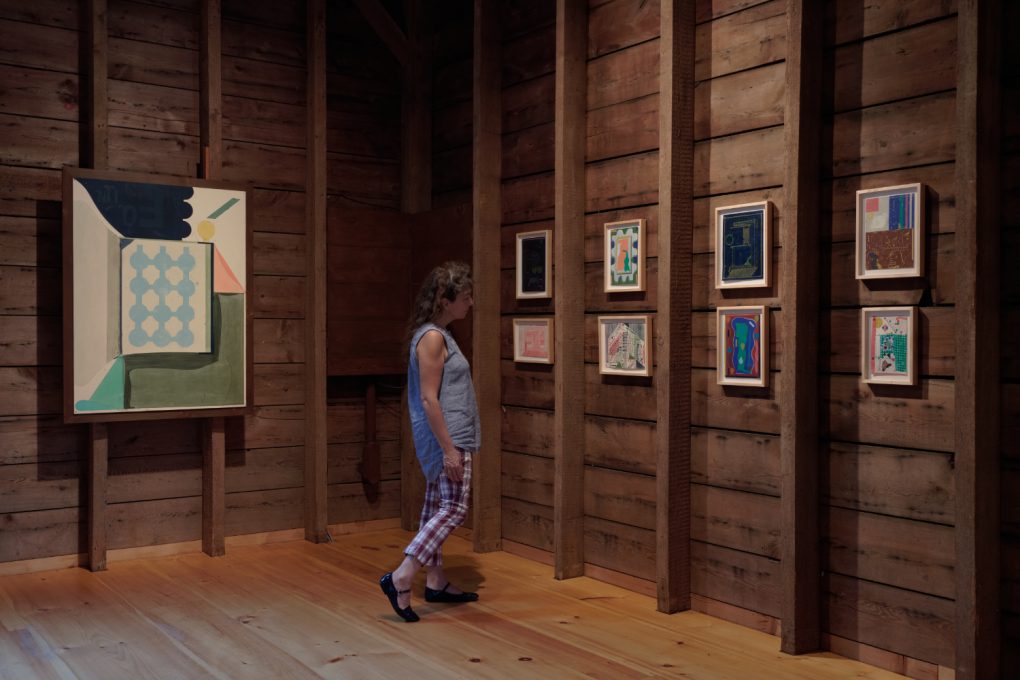
Sean Sullivan’s paintings from Three Painters at Duck Creek. Here is a list of works at the Arts Center at Duck Creek site.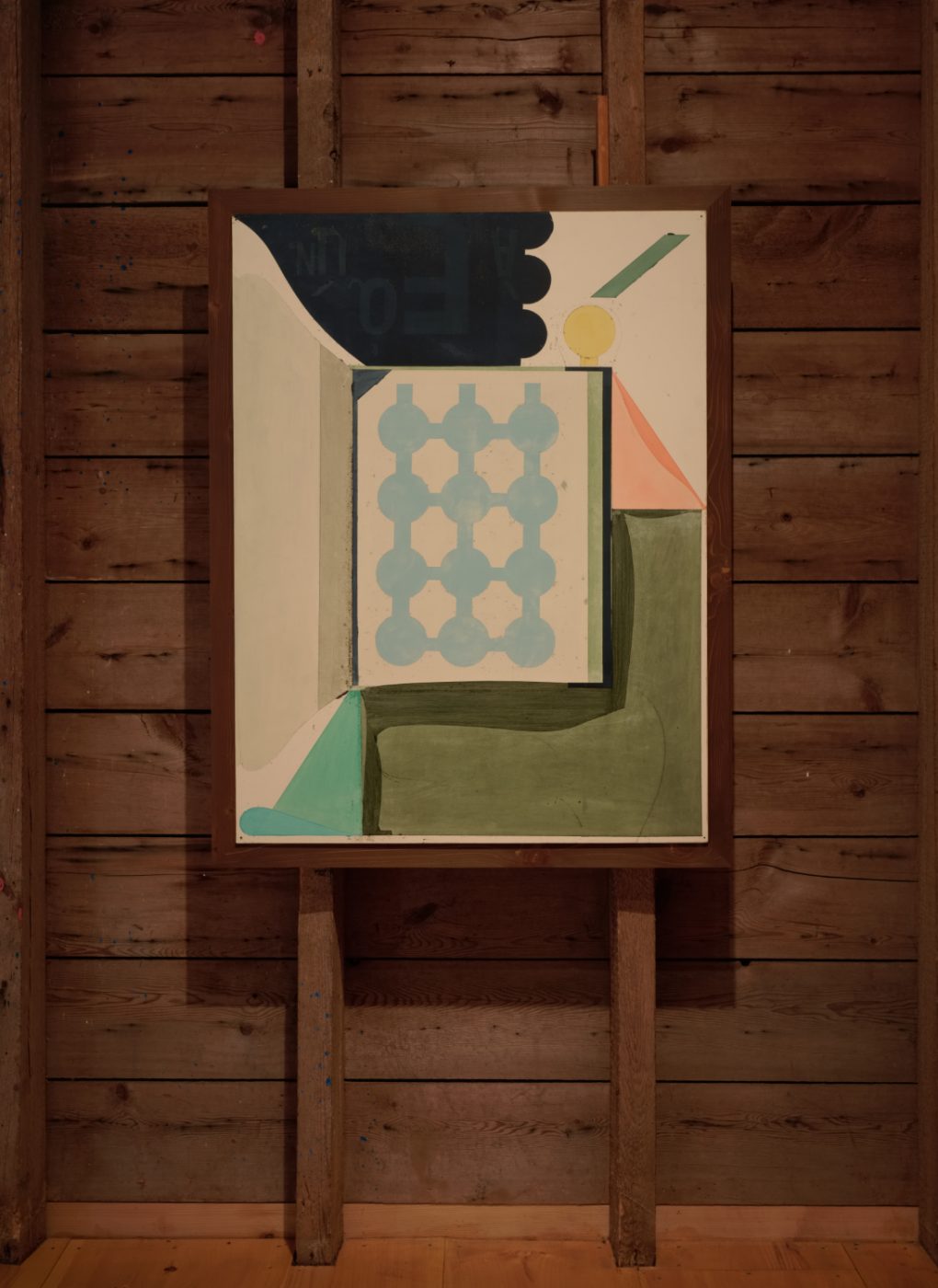 Futures, 2018, Oil on panel Unframed: 36 x 48″
Futures, 2018, Oil on panel Unframed: 36 x 48″Hiroyuki: You said “doubt–at times, extreme doubt”. Could you elaborate?
Sean: I think doubt in the studio, in life, extreme or otherwise, goes hand in hand with those moments of clarity and inspiration – grace. Time is really the salve. I think you just have to get through it, work through it, until there’s a ‘break in the clouds’. Maybe just the natural order of things – balance. Sometimes I think my doubt stems from not understanding where the work comes from so the ownership of it – the ego is thwarted a bit. If you didn’t ‘think of it’ then maybe you can’t entirely claim credit for it. Where does that leave you as an artist? An ‘originator’. But that is also what I love most about the process. The unknown – the mystery of it. This also works in reverse for me. What I mean by that is if I do have an idea, a ‘concept’ meaning the ego wants to direct the inspiration – it almost always (in my experience) leads to frustration and disappointment. I will say those excursions into frustration and disappointment are not fruitless and often lead to things unexpected – breakthroughs even.
Hiroyuki: Yes indeed, I feel what you are saying. Our perceptions seem to struggle at times, clouded by our immediate interests or lack of understanding, or often both. But, paradoxically, those obstacles also prompt us to explore and seek cohesive expressions that somehow resonate with us. In doing so we struggle to see and we face the unknown in an honest manner. This I regard as one of the most crucial aspects of the making process, which I believe resonates with our struggle in how to be.
Thank you so much for the fascinating conversation and I look forward to seeing more of your fantastic work.
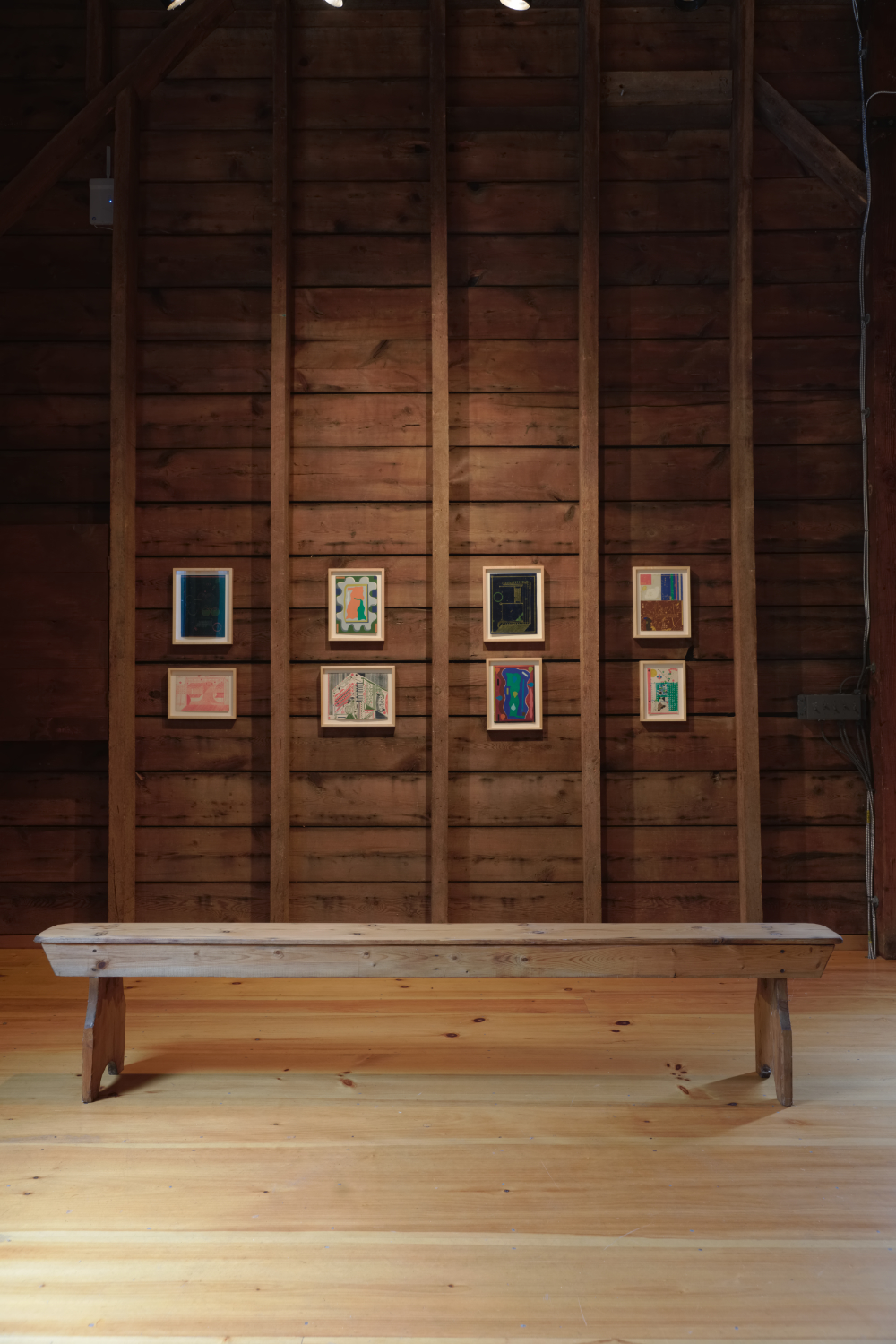
Sean Sullivan’s paintings from Three Painters at Duck Creek. Here is a list of works at the Arts Center at Duck Creek site.Sean Sullivan (b. 1975 Bronx, NY) lives and works in the Hudson Valley, NY. He received the NYSCA/NYFA Artist Fellow in Printmaking/Drawing/Book Arts Grant in 2017. Sullivan has participated in group exhibitions at the Samuel Dorsky Museum of Art at SUNY New Paltz, NY; the Markus Luttgen Gallery, Cologne, Germany; and the Museum for Drawing, Huningen, Belgium.
